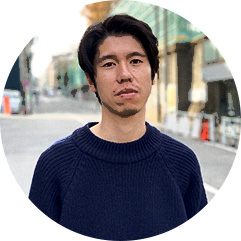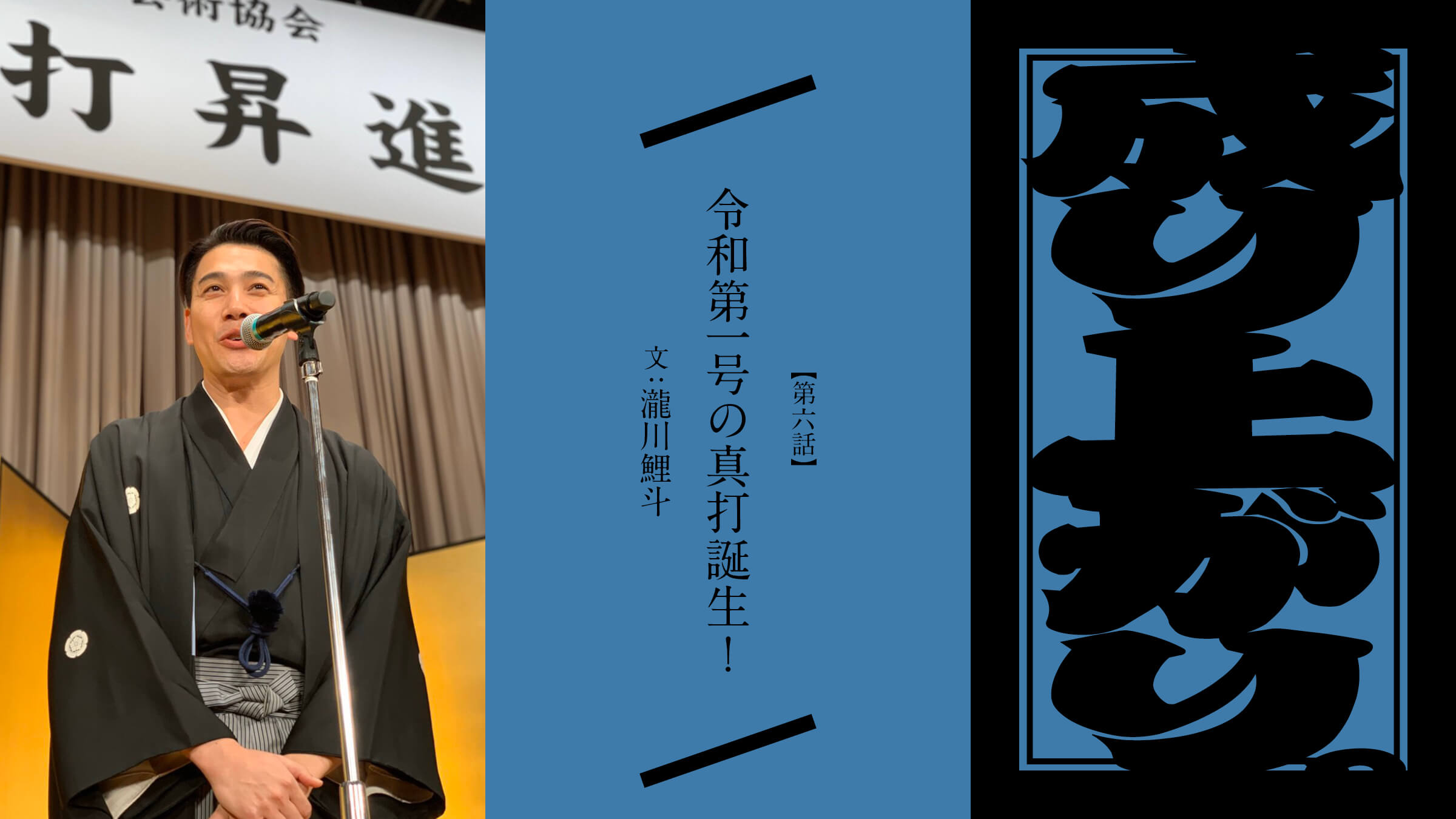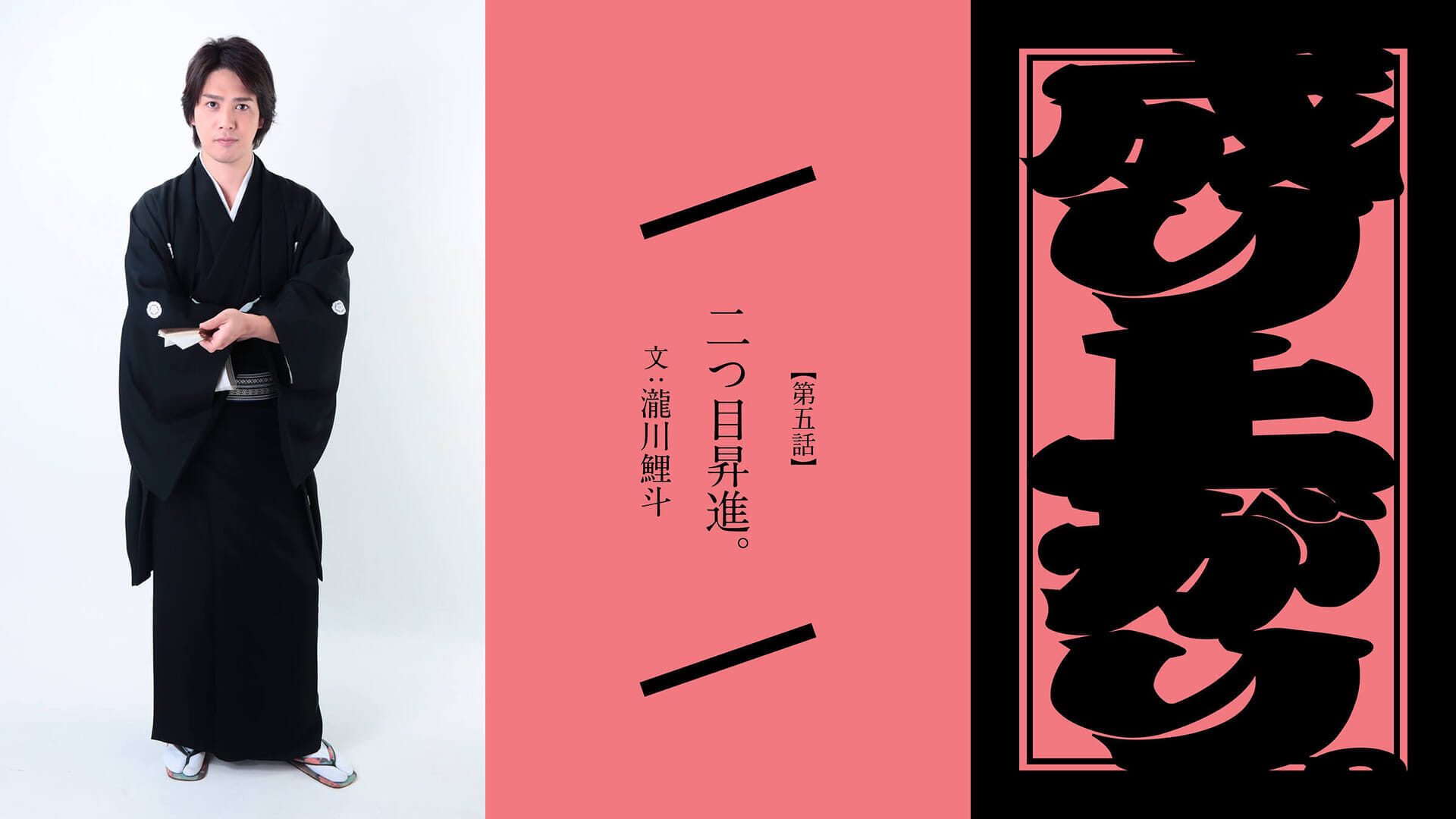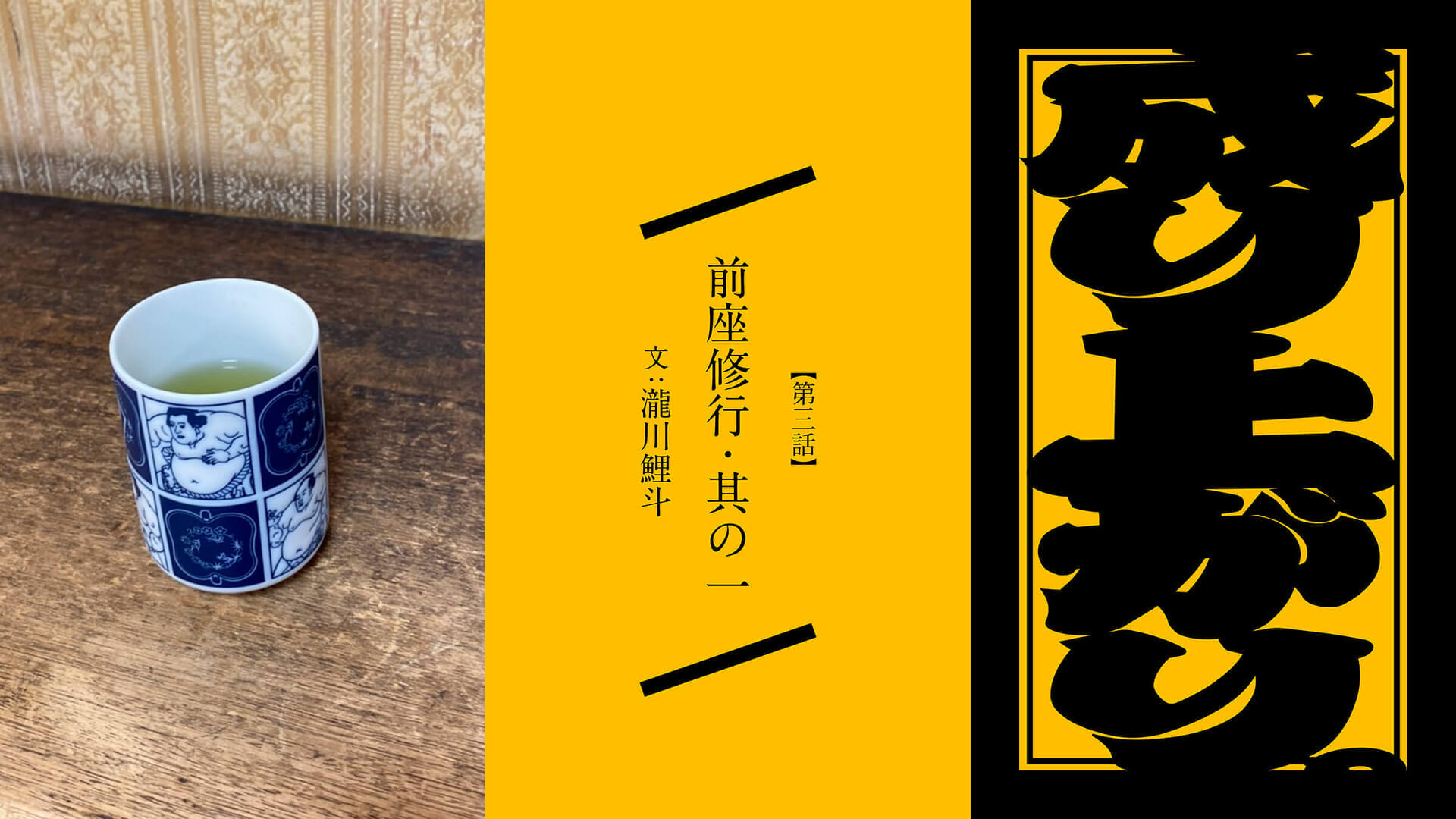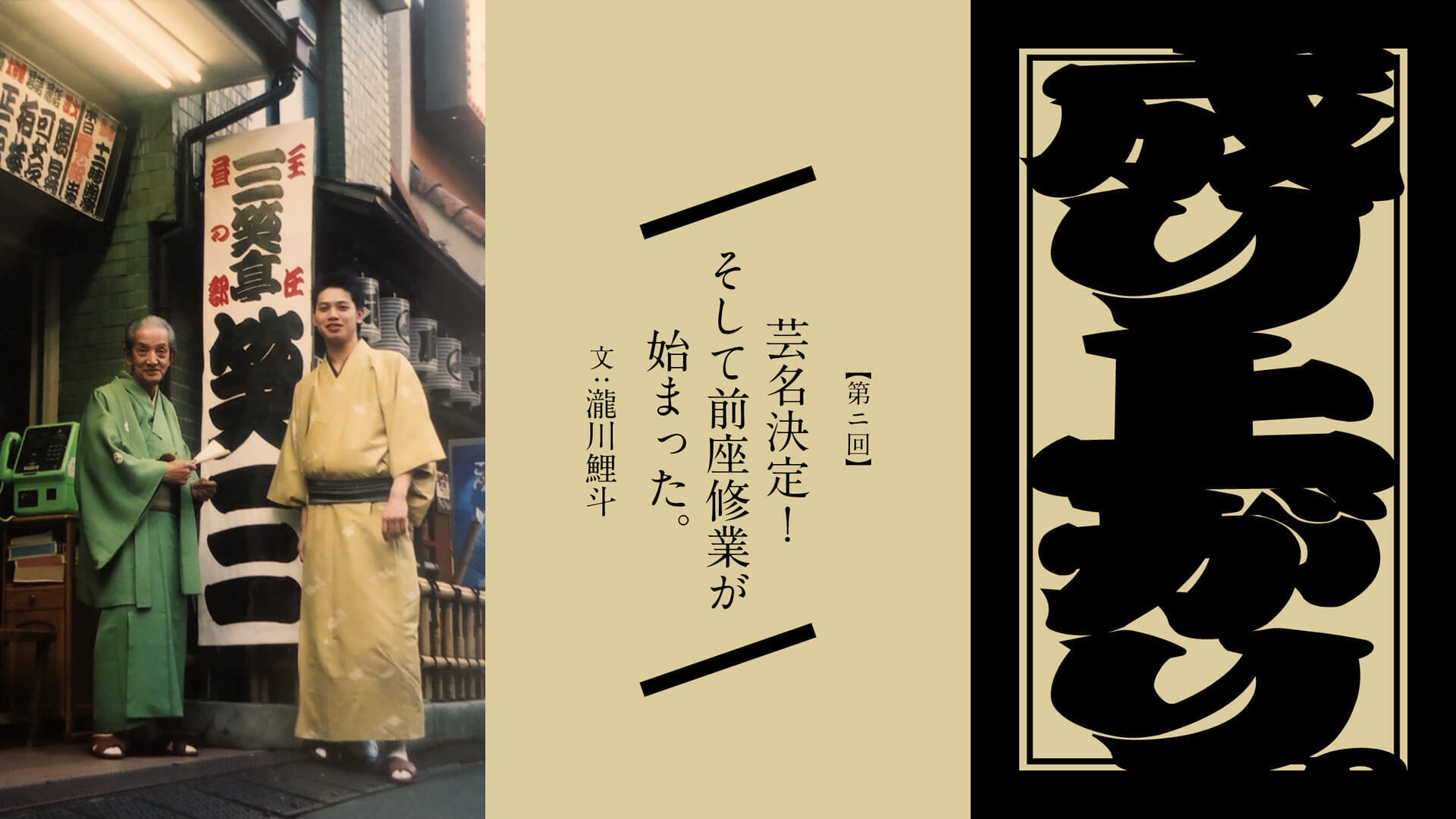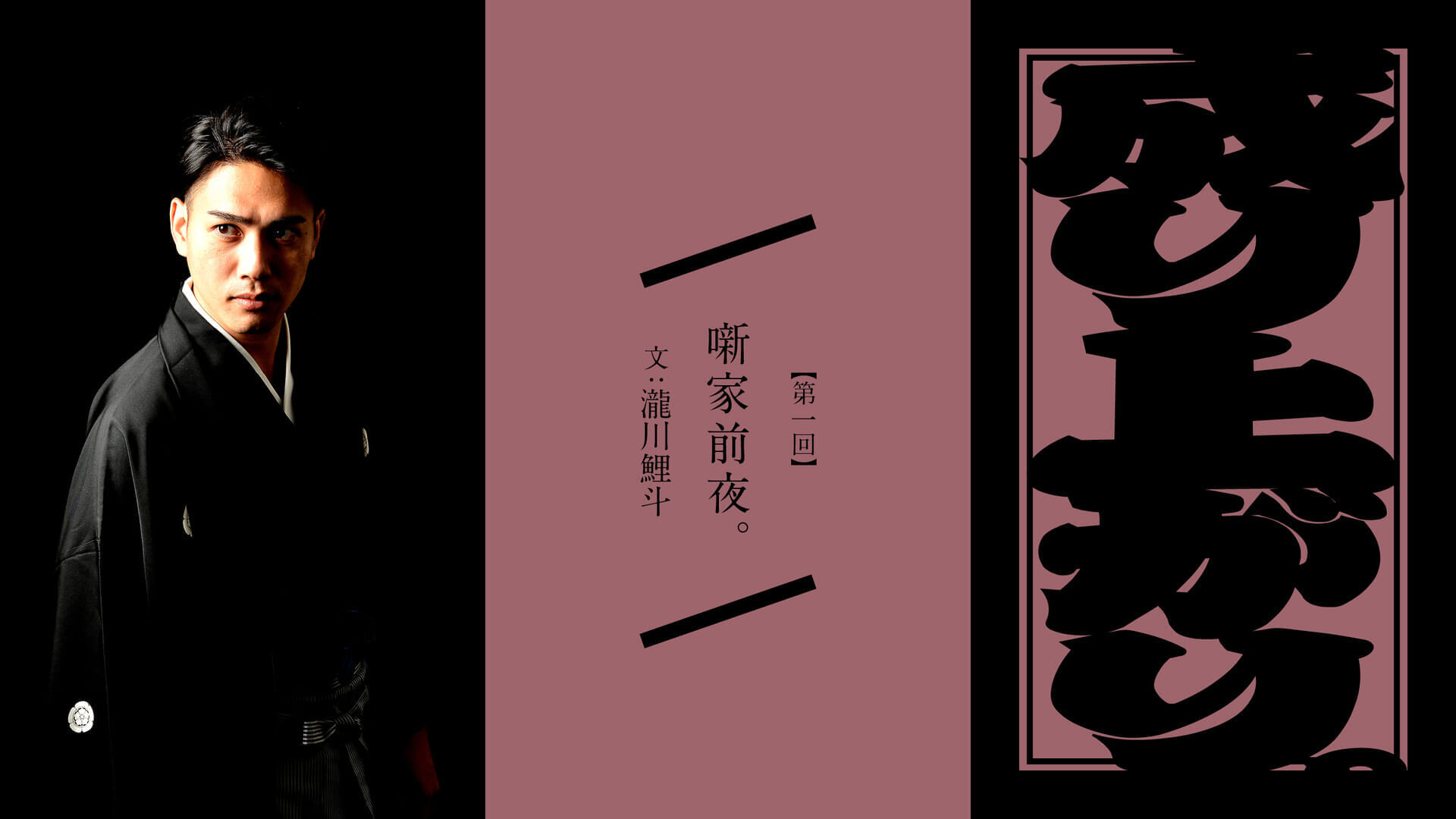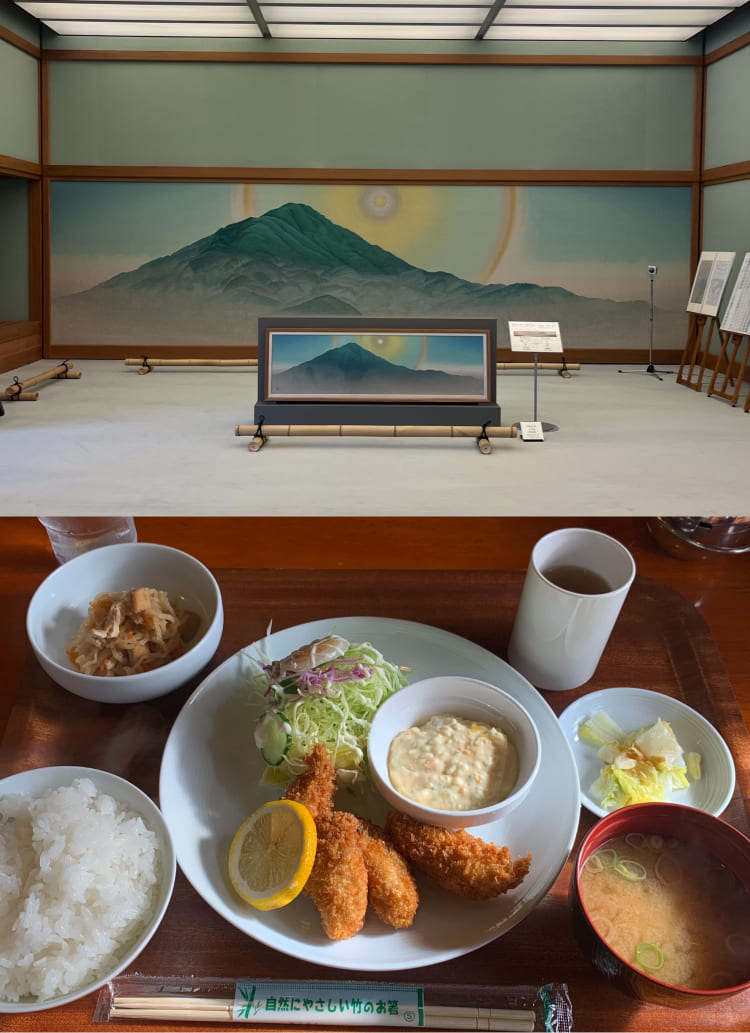Episode 4 Maeza training, part 2
Now, even after three months in the front of the house, the fatigue of the seniors and masters in the backstage area has not worn off.
When I was initiated, there were no more than 10 maeza, so serving tea was not my only job. I remember that I had to fold the kimono of the master who had finished his turn immediately after serving tea, help him dress before his turn, and so on, every second counted.
It was at this time that I greeted Master Sanyutei Koyuzo, which led to my frequent trips to regional rakugo performances as a bag-bearer.
As Master was about to board the Shinkansen, I went out of my way to stop the general public in line at the platform and said, "Master! After you!" Looking back on it now, it was very rude of me. At that time, my master told me, "A comedian should let the customers on the train first, and then get on the train last! He taught me one of the most important lessons of being a rakugo storyteller.
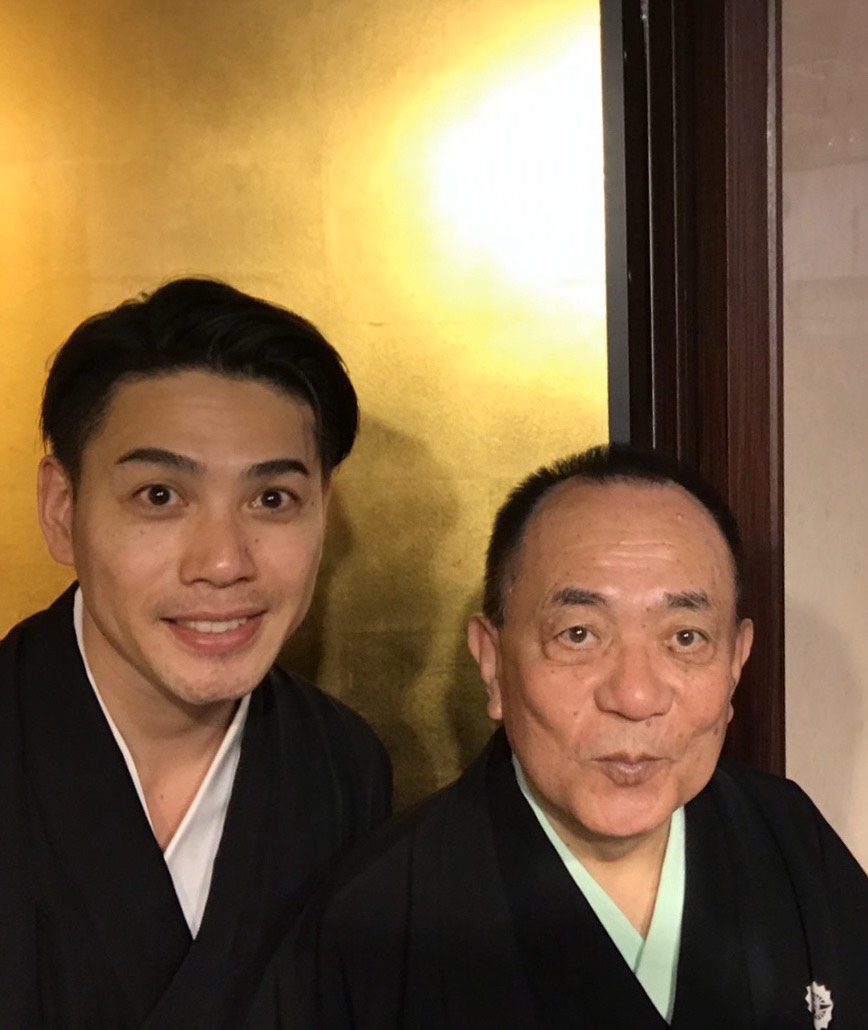
On the left is Koito Takigawa and on the right is Master Sanyutei Koyuzo.
I guess I still had the look I had in my hometown, and my master must have seen it and thought it was no good. He said, "A comedian has to be smiling and laughing all the time! Keep smiling no matter what! He was very grateful for these words. These were very kind words. Since then, I try to smile even when I am mourning in the rakugo world (laughs).
I still think, smiling is important.
It is not enough to simply fold the kimono, but each master must deliver the kimono in the same condition as when he or she unfolded the furoshiki before going on stage. This is another example of the care that goes into this process.
For example, if there are 100 masters, there are 100 different ways.
Moreover, while folding, you have to keep an eye on the dressing room and the most important part of the performance, the koza. If the storytelling is over while you are folding, and the taiko drums are not sounding, you have screwed up. Usually there is a taiko drummer, but there are always situations where there is no taiko drummer.
As you become accustomed to folding kimonos, you will be entrusted with another upper drummer's position.
Each master has his or her own theme song and dehyayashi, which of course must be memorized. I was happy when I was asked to play the taiko drum because I love music!
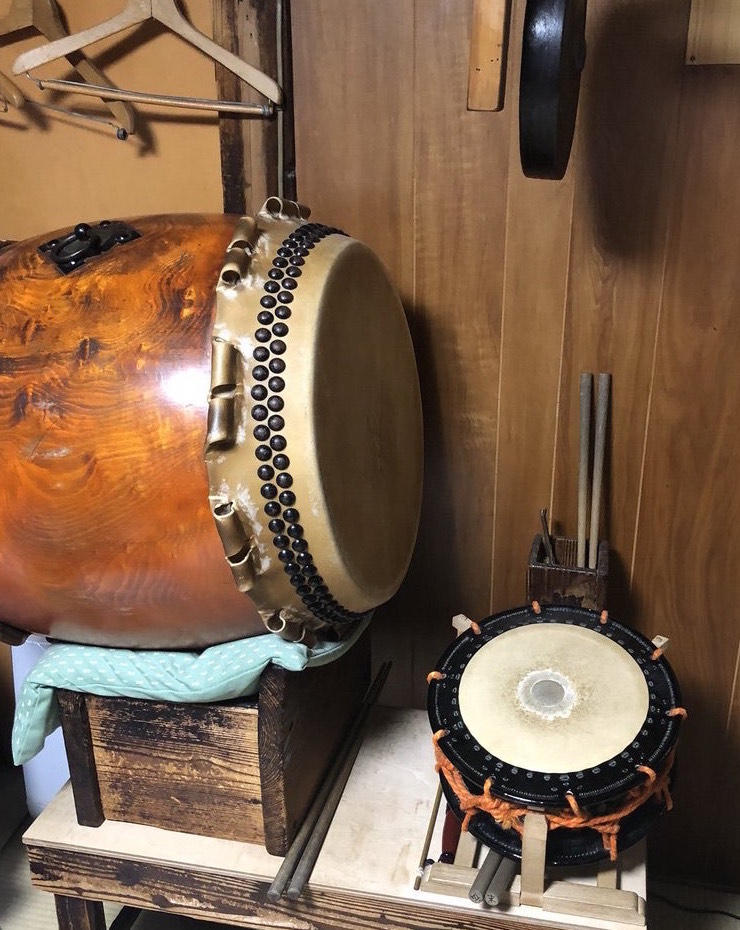
Odaiko (large drum) and kodaiko (small drum) are used at a yose. These drums are played when the performers ascend or descend the stage.
At that time, there were not many front-runners, so I did the taiko drumming and tidying up of the kimono almost by myself. I was so happy when the shamisen player said to me, "You are a good drummer! I was so happy when the shamisen lady said to me, "You are a good drummer! It is a fond memory.
Even under such circumstances, it is important to listen to the storytelling on the Takaza and put it into your body.
I am grateful to my master for teaching me how to work in the front of the house before entering the dressing room. I don't know how many years it will be, but when I have an apprentice, I plan to teach him as it is.
PROFILE
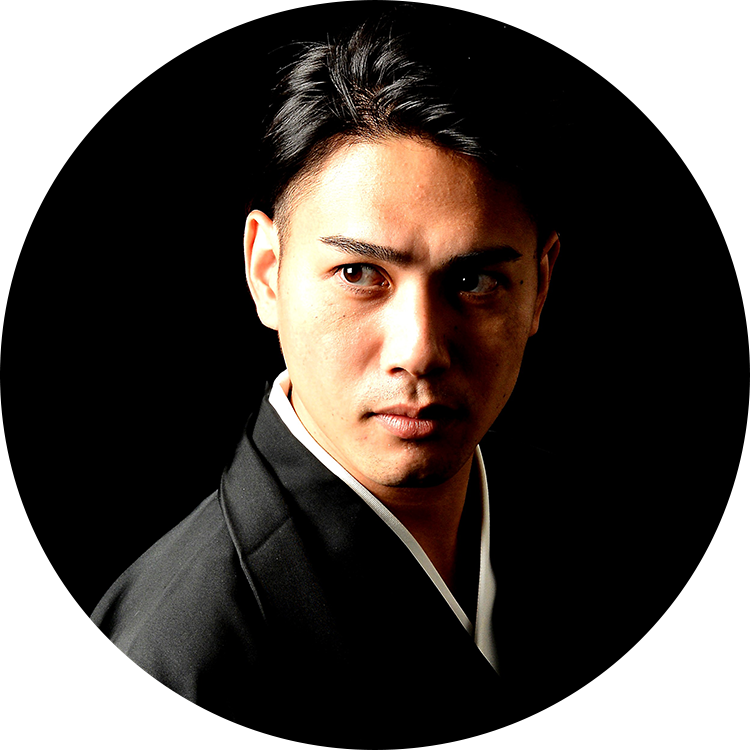
Born in 1984 in Nagoya, Japan, he is a member of the Rakugo Art Association. He became obsessed with motorcycles in high school and became the leader of a local motorcycle gang at the age of 17. He became an apprentice when he saw a solo performance by his master Takigawa Koisho while working part-time at a restaurant in Shinjuku, and was promoted to maeza in 2005, nitsume in 2009, and shinuchi in May 2019.



